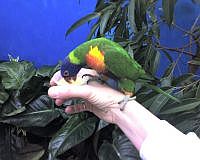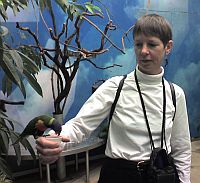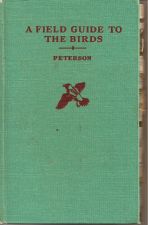
 This morning I visited the National Aviary with my friend Karen Lang and brought home some pictures on my cell phone. The birds more than made up for the gray day outdoors.
This morning I visited the National Aviary with my friend Karen Lang and brought home some pictures on my cell phone. The birds more than made up for the gray day outdoors.
Ever since I saw the flamingoes dance at the Aviary two winters ago, I have become fond of the place because:
- It’s a great place to see birds up close and personal – witness the lorikeet eating from my hand!
- The National Aviary rescues injured birds, studies endangered birds, and works for bird conservation. Two of their conservation projects include tracking golden eagles (see the December 6th blog) and management of the Pittsburgh urban peregrine program which they inherited from the Western Pennsylvania Conservancy this year.
- On a gray winter day, there are more interesting birds per square inch at the National Aviary than anywhere else in Pittsburgh.
Today the lories won me over. Three times a day, visitors can buy a cup of “lorie nectar” and go into the exhibit to offer it to the birds. The lories are familiar with this routine and will perch on your hand to lick the nectar from the cup. They have long tongues with black tips and they lick very fast. People often wonder if bird claws hurt. Well, the lories’ feet are gentle. They don’t hurt at all.
The most noticable thing about the lorie exhibit can be appreciated from a distance. The exhibit has a whole flock of lories in it and they are NOISY. Lories are social birds and love to shriek at each other at the tops of their lungs. Don’t expect to hear yourself think!
I was thrilled to have a lorie eating out of my hand. I definitely got my “bird fix” today.
If you like birds, I highly recommend a trip to the National Aviary. An added bonus is that admission is free from December 26 through 31. Click here for directions.
 I tried to switch – and couldn’t.
I tried to switch – and couldn’t. Happy birthday, Beethoven!
Happy birthday, Beethoven!